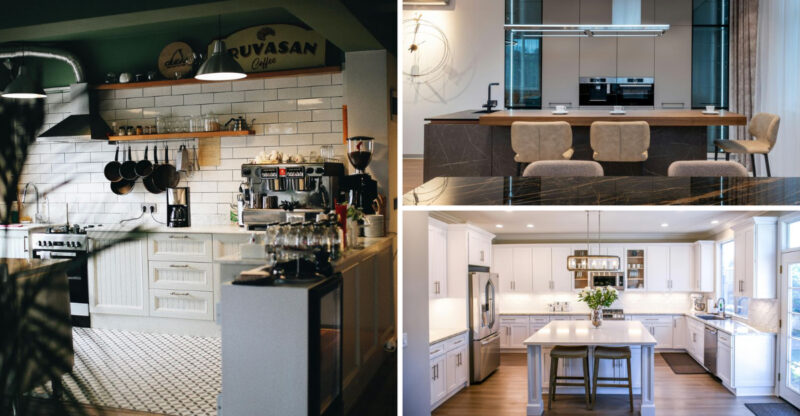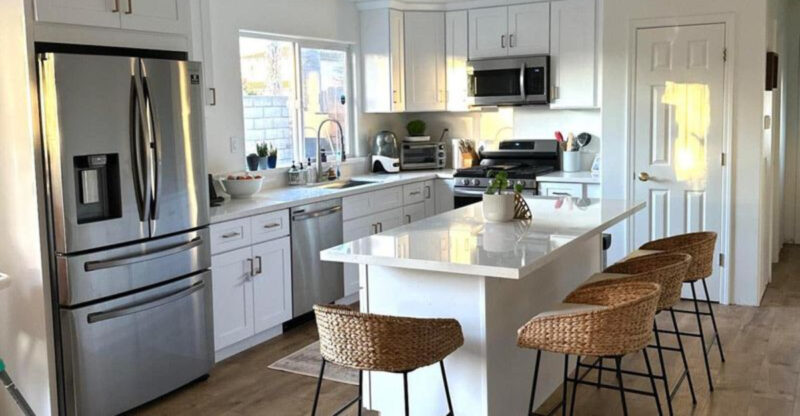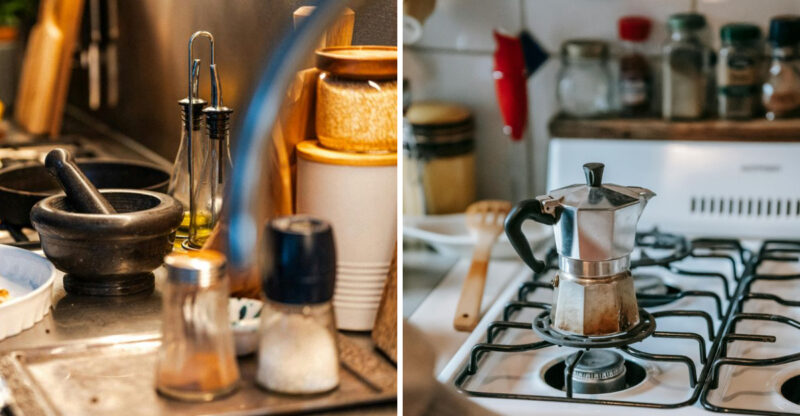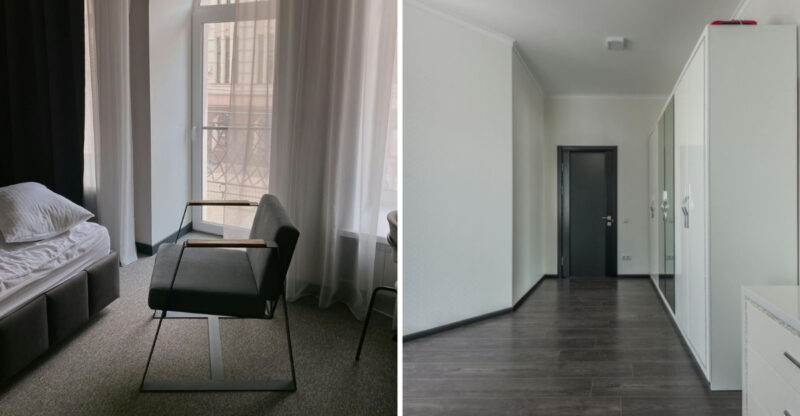10 Things You Should Never Keep In Your Bedroom & 10 Items Everyone Needs
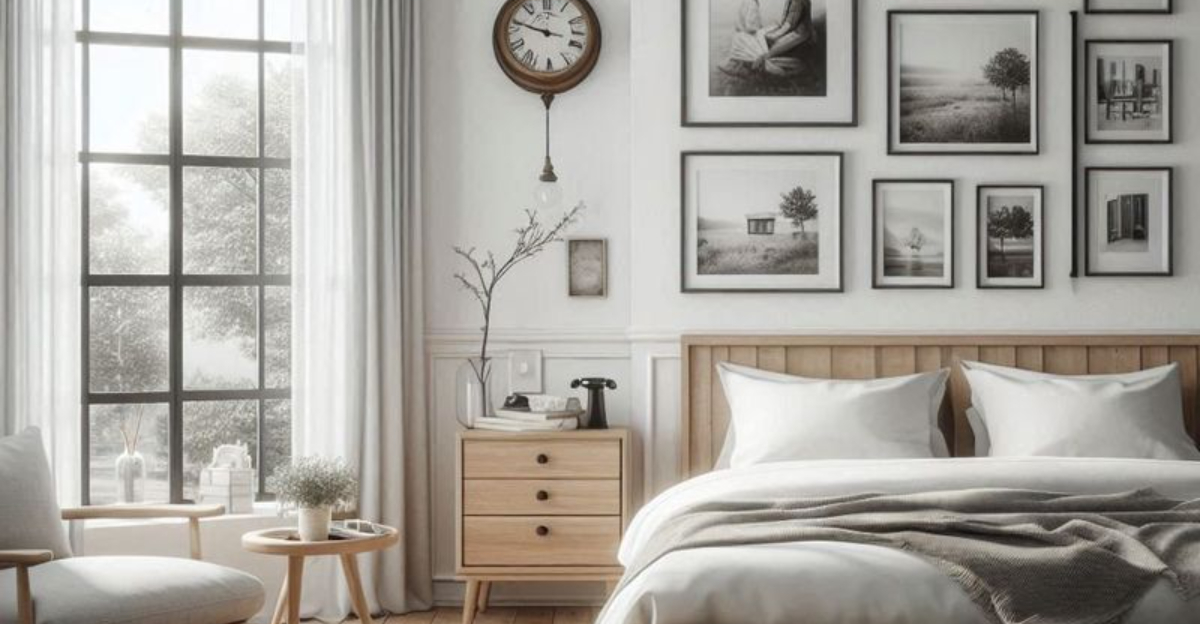
Your bedroom should be a sanctuary for rest and relaxation, but many of us unknowingly keep items that disrupt our sleep and well-being.
Creating the perfect sleep environment means knowing what to remove and what to add.
I’ve put together this guide to help you transform your bedroom into the peaceful retreat you deserve, identifying what’s sabotaging your sleep and what essentials will help you wake up refreshed every morning.
1. Work-Related Paperwork (never keep)
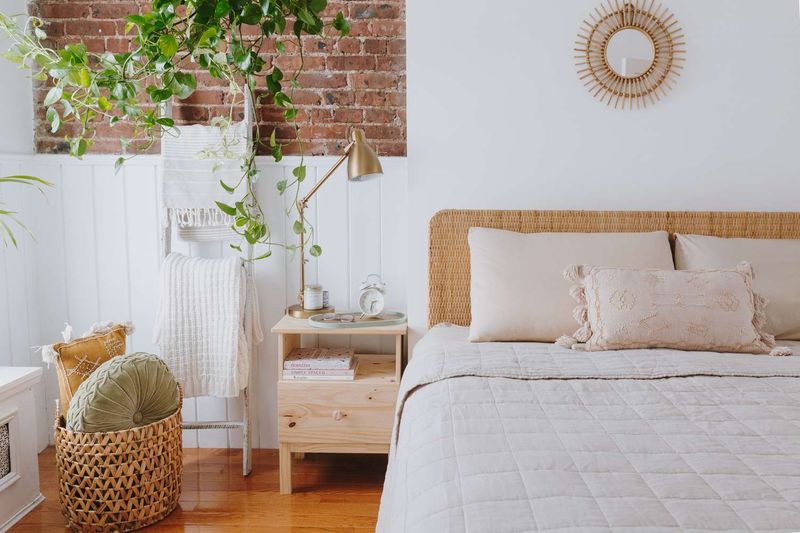
Bills, reports, and to-do lists have no place in your sleep sanctuary. When work documents lurk nearby, your mind struggles to disconnect from job-related stress, making quality sleep nearly impossible.
Studies show that seeing work materials before bed triggers anxiety and extends the time it takes to fall asleep. Your brain needs clear boundaries between professional and personal life. Instead, designate a specific spot elsewhere in your home for all work items.
This simple change helps signal to your brain that bedtime means rest time not worry time. Many people report falling asleep faster and sleeping more soundly after removing work reminders from their bedroom.
2. Exercise Equipment (never keep)
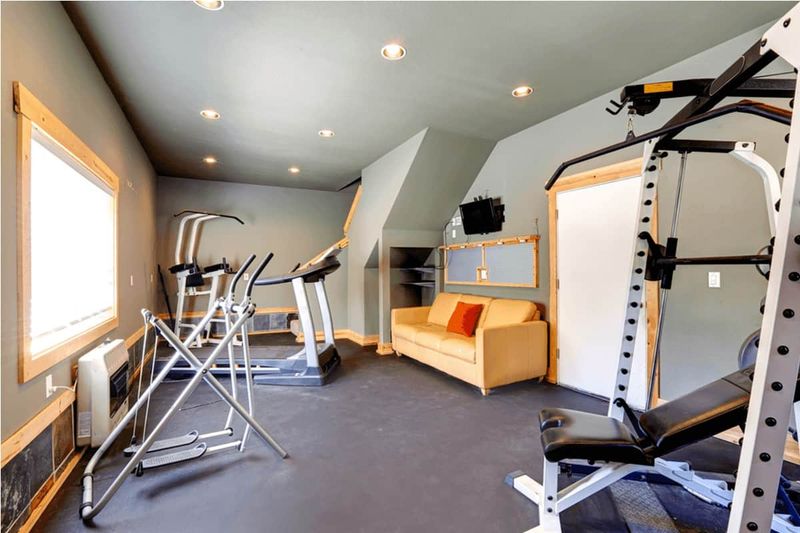
Treadmills, weights, and yoga mats might seem convenient to keep near your bed, but they’re actually sleep saboteurs. Exercise gear constantly reminds you of workouts you should be doing, creating subtle pressure even as you try to wind down.
The bedroom should trigger relaxation cues, not activity signals. Physical equipment also collects dust and takes up valuable space that could be used for items that actually promote rest. Moving fitness equipment to a dedicated workout space creates proper mental boundaries.
If space is limited in your home, consider foldable options that can be stored out of sight. This separation helps maintain your bedroom as a true rest zone rather than a multi-purpose space.
3. Bright Overhead Lights (never keep)
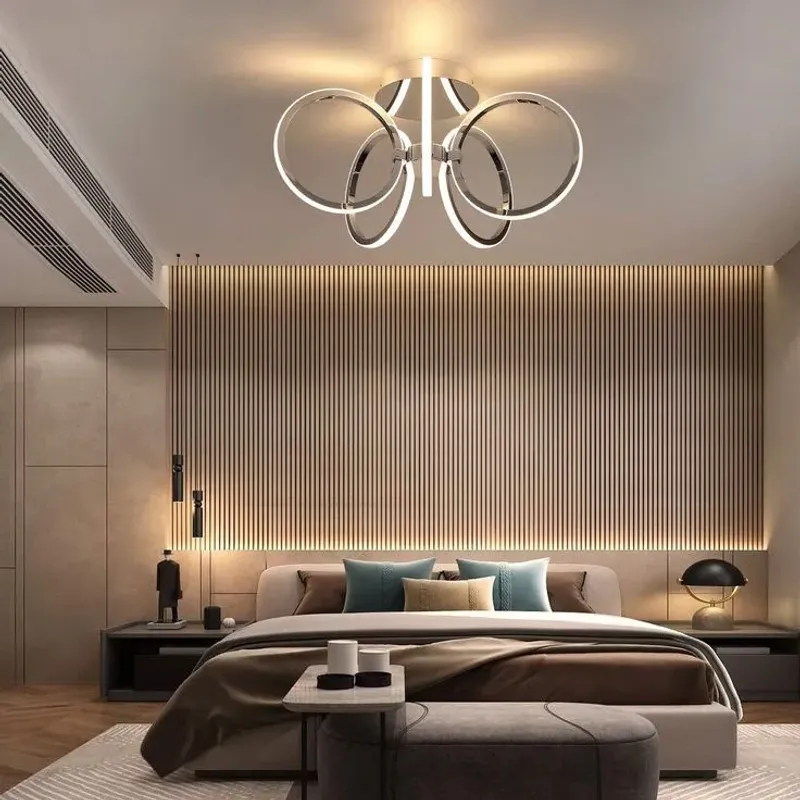
Harsh ceiling fixtures flood your bedroom with intense light that disrupts your body’s natural sleep-wake cycle. These lights suppress melatonin production, the hormone responsible for making you sleepy at night. Your brain interprets bright light as daytime, making it harder to wind down naturally.
Many overhead fixtures also cast unflattering shadows and create an institutional feeling that’s anything but relaxing.
Replace that ceiling spotlight with gentler lighting options positioned at eye level or below. Warm-toned bulbs with dimming capabilities allow you to gradually decrease light intensity as bedtime approaches. This simple switch helps signal to your body that it’s time to prepare for sleep, improving both how quickly you fall asleep and your overall sleep quality.
4. Dirty Laundry Piles (never keep)
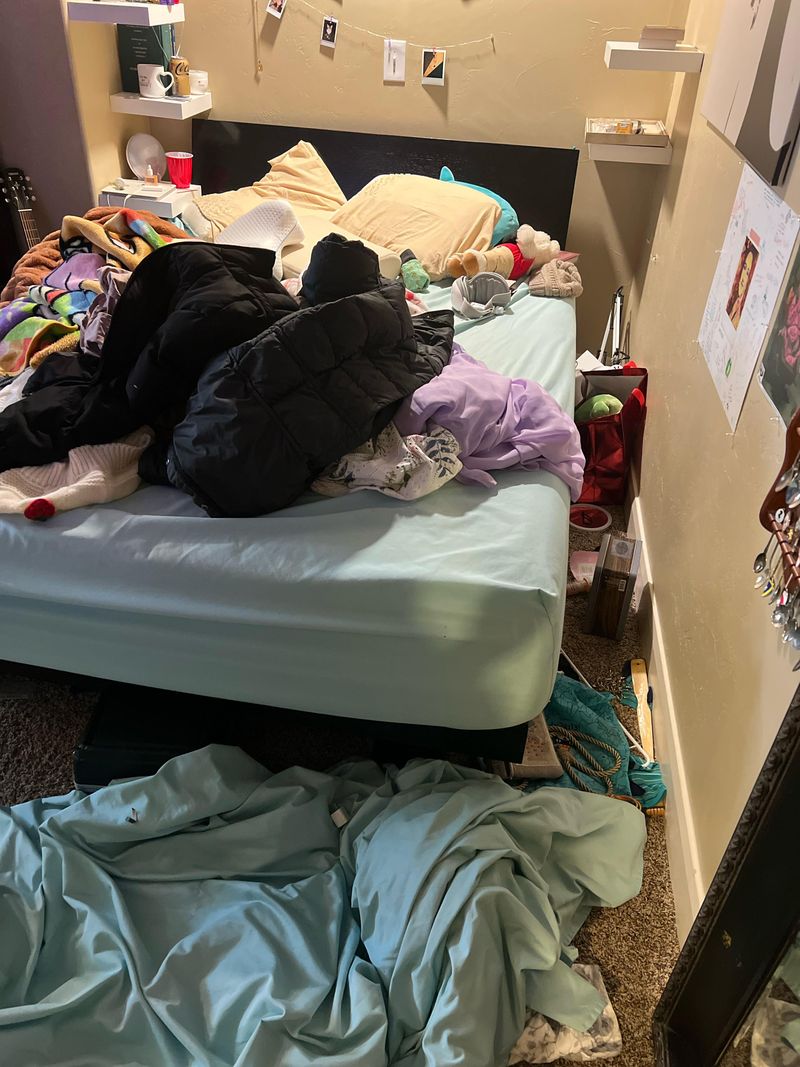
Heaps of worn clothes create both physical and psychological clutter that interferes with restful sleep. Those piles emit subtle odors from body oils, perfumes, and environmental pollutants that you might not consciously notice but still affect air quality.
Seeing unfinished chores before bed also triggers stress hormones that keep your mind racing. Laundry mountains quickly become dust magnets and potential homes for allergens that can disrupt breathing during sleep. Invest in a proper hamper with a lid and place it in your bathroom or closet instead.
If space allows, establish a dedicated laundry area completely separate from your sleeping space. The visual calm of a clothes-free bedroom creates a more peaceful environment that supports better sleep and morning energy levels.
5. Cluttered Desks (never keep)
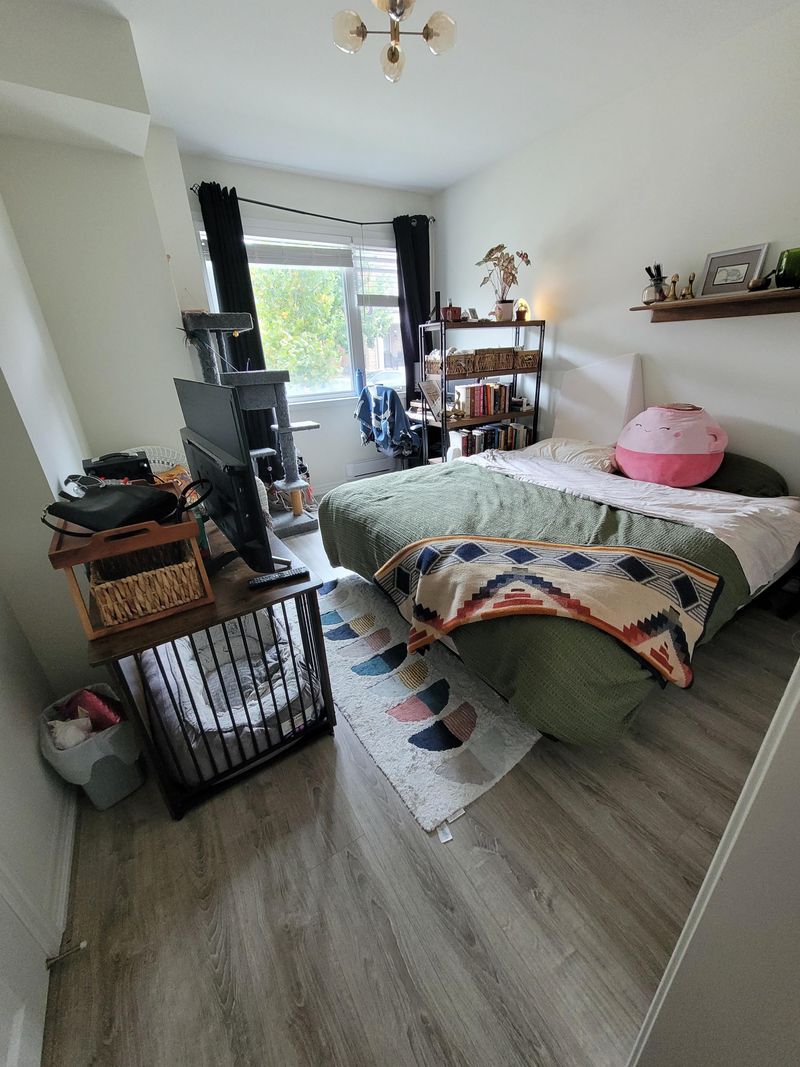
Workspace setups in bedrooms blur the crucial boundary between productivity and rest. That desk covered with unfinished projects keeps your brain in active mode when it should be powering down. Research shows people who work where they sleep report higher anxiety levels and more difficulty falling asleep.
The constant visual reminder of pending tasks makes your mind race with tomorrow’s to-do list instead of drifting into restorative sleep. If space constraints mean you absolutely must have a desk in your bedroom, use a room divider or curtain to separate it from your bed.
Another option is a desk with doors that close, hiding work items completely. Your brain needs clear environmental cues about when to be alert and when to relax mixing these signals confuses your natural rhythms.
6. Excess Electronics (never keep)

Televisions, gaming consoles, and multiple charging devices flood your sleep space with both mental stimulation and harmful blue light. These gadgets emit a specific light wavelength that tricks your brain into thinking it’s daytime, even at 11 PM.
Beyond light disruption, electronics create temptation for “just one more episode” or checking emails right before sleep. Most devices also generate electromagnetic fields and subtle electronic noises that can interfere with deep sleep cycles. Try removing all screens from your bedroom for just one week and notice the difference in your sleep quality.
If you need your phone as an alarm, place it across the room facing down. For essential electronics, use timers to ensure they power down completely at bedtime. Many people discover they fall asleep faster and wake less frequently after creating an electronics-free sleep zone.
7. Food and Snacks (never keep)

Midnight munchies might seem harmless, but keeping snacks by your bed invites a host of problems. Food particles attract unwanted visitors like ants and other critters that have no place in your sleep sanctuary. Eating in bed also creates crumbs that irritate skin and disrupt comfort.
Your digestive system works best when it has time to process food before you lie down late-night eating can trigger acid reflux and indigestion that wake you hours later. Finish your last bite at least two hours before bedtime and keep all food in the kitchen where it belongs.
This habit helps maintain cleaner bedding, prevents sleep disruptions from digestive issues, and avoids establishing unhealthy associations between bedtime and eating. Your bedroom should trigger sleep cues, not hunger signals that keep you awake.
8. Harsh Alarm Clocks (never keep)
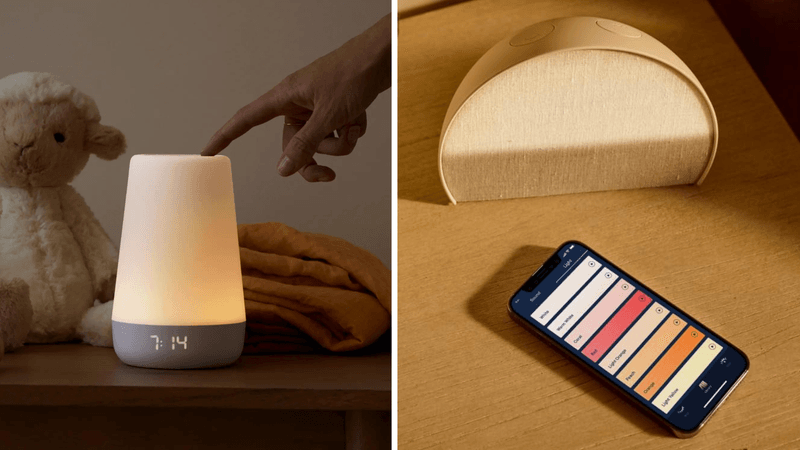
Jarring alarm sounds shock your system awake, triggering a stress response that floods your body with cortisol. This abrupt awakening method starts your day in fight-or-flight mode rather than with natural, refreshed energy.
Those loud, beeping traditional alarms have been linked to morning grogginess that can last hours. The anxiety of knowing you’ll be startled awake can even affect how deeply you sleep in the early morning hours. Switch to a sunrise alarm that gradually brightens your room, mimicking natural daybreak. These gentle wake-up methods work with your body’s rhythms instead of against them.
Many also offer nature sounds that increase in volume slowly. Users report feeling more alert and positive when waking naturally with light rather than sound. Your morning mood affects your entire day why start it with an auditory assault?
9. Dusty Artificial Plants (never keep)
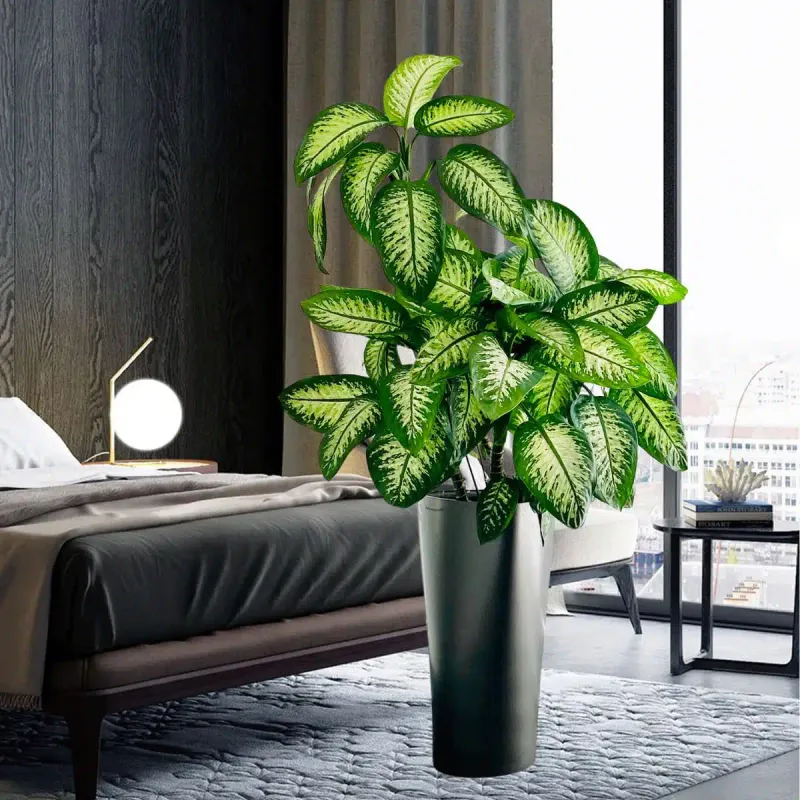
Fake foliage might seem like low-maintenance decor, but these dust collectors can seriously impact your breathing while you sleep. Artificial plants accumulate surprising amounts of dust, pollen, and airborne particles that you then inhale all night long.
Unlike real plants that can actually purify air, their plastic counterparts offer no breathing benefits. The synthetic materials in cheaper artificial plants may even release small amounts of chemicals into your bedroom air. If you love greenery in your sleep space, choose real, low-maintenance plants like snake plants or pothos that actually improve air quality.
If allergies make live plants impossible, be vigilant about cleaning artificial ones weekly or better yet, replace them with natural decor like stone or wood that collects less dust. Your lungs will thank you with deeper, more restful breathing throughout the night.
10. Unfinished DIY Projects (never keep)
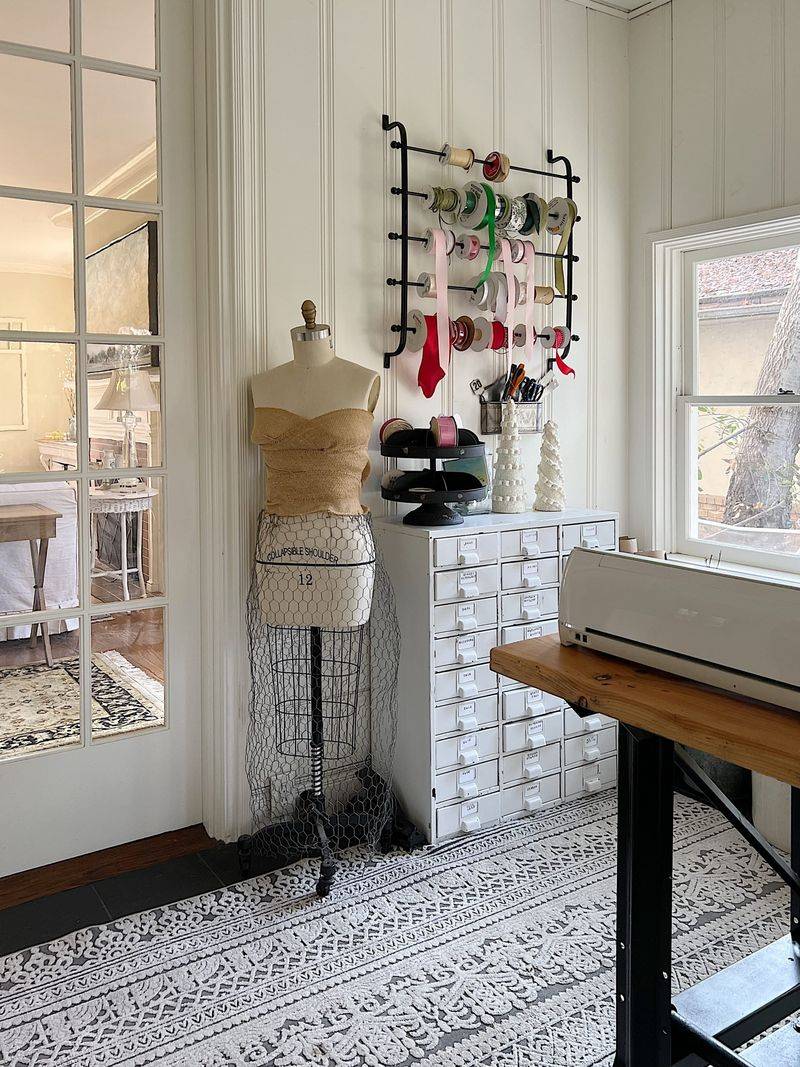
Half-painted furniture, fabric swatches, and tools scattered around your bedroom create visual chaos that subtly stresses your mind. These incomplete projects serve as constant reminders of tasks awaiting your attention, making true relaxation nearly impossible.
Your brain registers these unfinished items as open mental loops that need closing. This triggers low-level anxiety even when you’re trying to wind down. Many DIY materials also release volatile organic compounds that can affect air quality and breathing. Relocate works-in-progress to a dedicated hobby area elsewhere in your home.
If space limitations make this challenging, store project materials in closed containers completely out of sight. This simple boundary helps your mind recognize the bedroom as a completion zone a place where nothing needs doing—rather than another workspace. Many find their sleep quality improves dramatically once these visual stress triggers are removed.
11. Comfortable Mattress (everyone needs)

Quality sleep begins with what lies beneath you every night. A supportive mattress properly aligns your spine while cushioning pressure points like shoulders and hips, preventing those morning aches many mistakenly attribute to “sleeping wrong.” Your ideal mattress depends on your unique body type and sleep position.
Side sleepers typically need softer surfaces that allow shoulders and hips to sink slightly, while back and stomach sleepers often require firmer support to maintain proper alignment. Invest in the best mattress you can afford you spend roughly a third of your life on it!
Replace yours every 7-10 years, sooner if you notice sagging, squeaking, or worsening sleep quality. Many companies now offer risk-free trial periods, letting you test your mattress for weeks or months. This essential foundation affects everything from back health to daily energy levels and cognitive function.
12. Soft Bedding and Pillows (everyone needs)
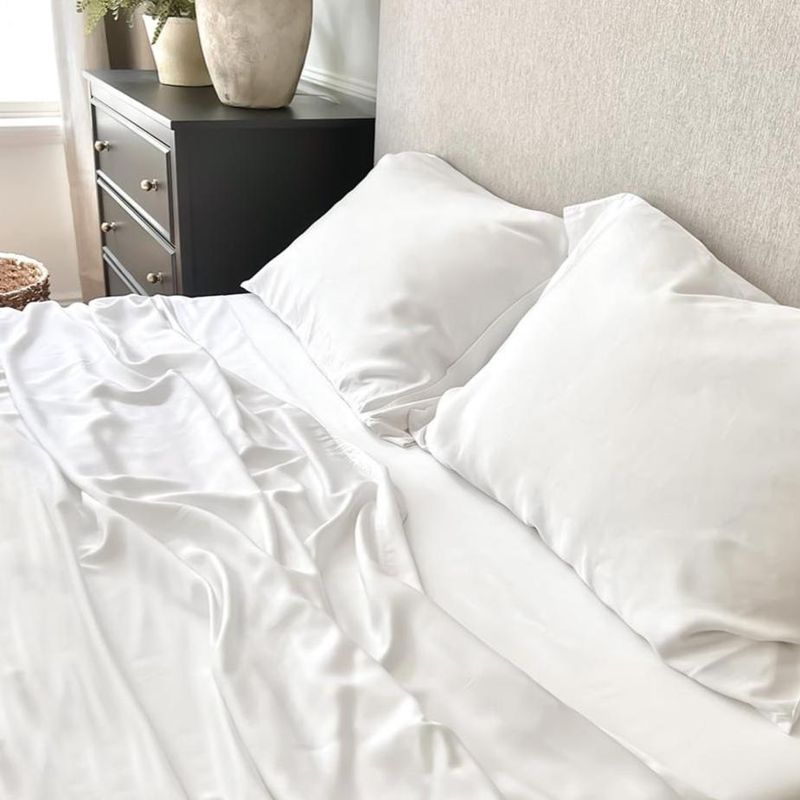
Luxurious sheets and proper pillows transform ordinary sleep into truly restorative rest. Thread count matters less than the actual fiber quality look for natural materials like cotton, bamboo, or linen that breathe well and wick moisture away from your body.
Your pillow should maintain proper neck alignment based on your sleep position. Side sleepers need thicker pillows, back sleepers medium support, and stomach sleepers very thin cushioning. Having options for different temperatures helps too lightweight covers for summer and cozier layers for winter.
Replace pillows every 1-2 years as they accumulate dust mites and lose supportiveness. Wash bedding weekly in hot water to remove skin cells and oils that accumulate nightly. The tactile pleasure of slipping into clean, comfortable bedding isn’t just a luxury it triggers psychological relaxation signals that help your body prepare for deep, healing sleep.
13. Blackout Curtains or Blinds (everyone needs)
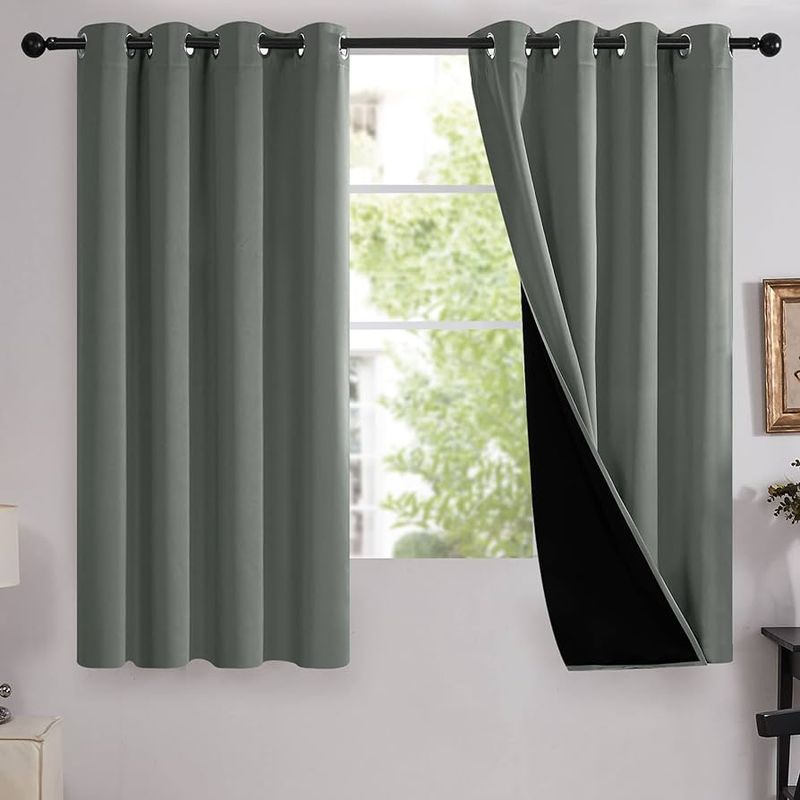
Light control transforms your sleep environment completely. Even small amounts of streetlight or early morning sunshine can signal your brain to stop producing melatonin, pulling you from deeper sleep stages prematurely.
True blackout window coverings block 99-100% of outside light, creating the cave-like darkness your brain evolved to expect during rest hours. They also provide insulation benefits, keeping bedrooms cooler in summer and warmer in winter while reducing outside noise. Choose options with light-blocking side channels or overlaps to prevent light leakage around edges.
Many styles now offer both blackout and decorative functions, with liners that can be drawn separately from sheer daytime coverings. The investment pays off quickly in improved sleep quality, especially for shift workers, light-sensitive sleepers, or those in urban areas with significant light pollution. Your brain simply sleeps better in properly darkened rooms.
14. Bedside Table (everyone needs)
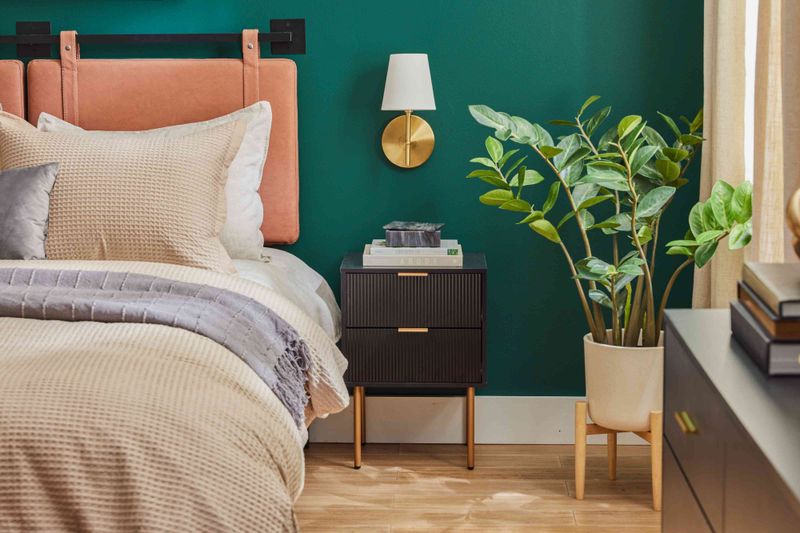
This humble furniture piece might seem optional, but a properly organized nightstand prevents disruptive midnight searches. Having essentials within arm’s reach means you won’t fully wake yourself hunting for water, medications, or reading glasses.
The ideal bedside table includes space for a soft-light lamp, a water carafe, and perhaps one book. Avoid cluttering this surface with electronics or stress-inducing items like bills or to-do lists. A small drawer helps conceal personal items while keeping them accessible. Position your table at mattress height for easiest access without stretching or straining.
Some sleepers benefit from tables on both sides of the bed, even when sleeping alone, providing more surface area and balance to the room’s design. This small piece of furniture, when thoughtfully arranged, supports your sleep routine and prevents those fully-awake middle-of-night moments that can ruin restorative rest.
15. Ambient Lighting (everyone needs)
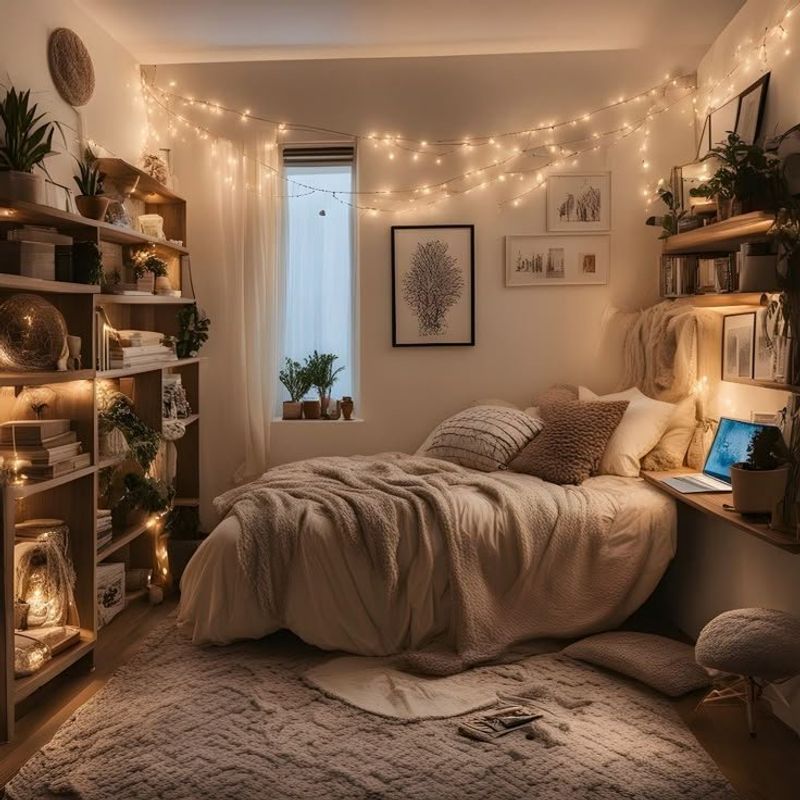
Gentle, layered lighting transforms your bedroom from merely functional to truly restful. Your brain responds to light intensity and color temperature, with warm, low lighting triggering natural melatonin production that prepares you for sleep.
Create a three-layer lighting system: soft ambient light for overall illumination, task lighting for reading or activities, and accent lighting for atmosphere. Dimmer switches allow you to gradually decrease brightness as bedtime approaches, mimicking the natural sunset your body evolved with. Choose bulbs in the warm spectrum (2700-3000K) rather than cool blue tones that suppress sleep hormones.
Wall sconces at eye level or below prevent harsh overhead shadows while creating a cozy atmosphere. Smart lighting systems can automate this dimming process, gradually shifting your environment from daytime alertness to evening restfulness without any effort on your part.
16. Cozy Throw Blanket (everyone needs)
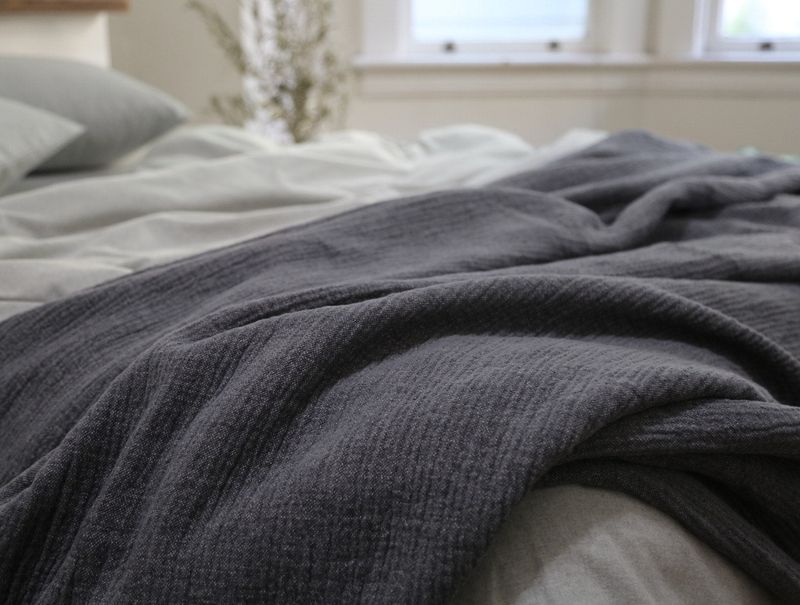
Though often considered decorative, a quality throw serves multiple practical purposes in your sleep sanctuary. This versatile layer provides customizable warmth when you need just a little extra coverage without overheating under your main bedding.
During seasonal transitions, throws let you adjust to temperature fluctuations without changing your entire bed setup. The weight of a heavier throw can also provide gentle pressure that many find calming, similar to the principles behind weighted blankets but more adaptable. Choose natural materials like cotton, wool, or cashmere that breathe well and feel pleasant against skin.
The simple act of wrapping yourself in something soft triggers comfort associations in your brain, helping signal that it’s time to relax. Having this extra layer readily available prevents sleep disruptions from minor temperature changes throughout the night.
17. Functional Closet Space (everyone needs)
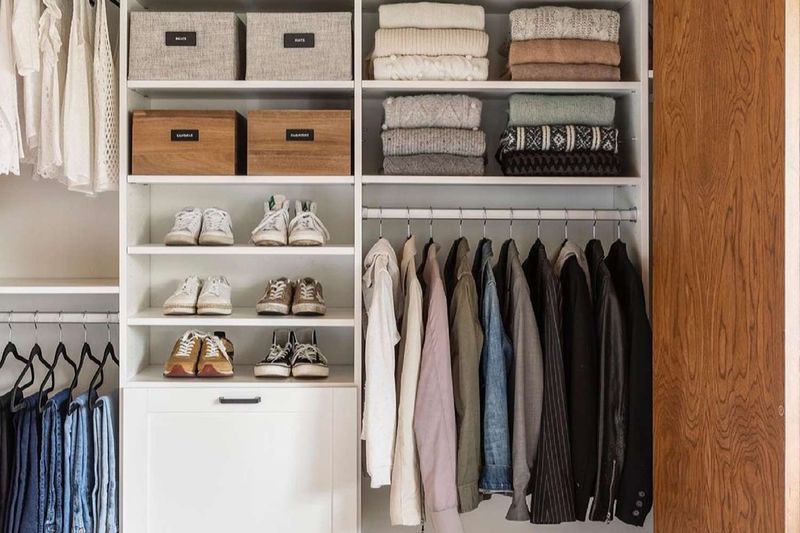
Well-organized storage prevents the stress-inducing clutter that disrupts sleep quality. When clothes have proper homes, your bedroom remains a peaceful retreat rather than a chaotic dumping ground. Maximize vertical space with double hanging rods and shelf dividers.
Use uniform hangers for a visually calming effect and to prevent clothes from sliding off. Drawer organizers keep smaller items contained and easily accessible without rummaging. If working with limited space, implement a seasonal rotation system, storing off-season items elsewhere. Install hooks on the back of your bedroom door for frequently used items.
The effort of creating organized closet systems pays dividends in reduced visual noise and morning efficiency. Many people report feeling noticeably more relaxed in their bedrooms after implementing proper storage solutions the psychological benefit of order extends beyond mere convenience.
18. Calming Wall Color (everyone needs)
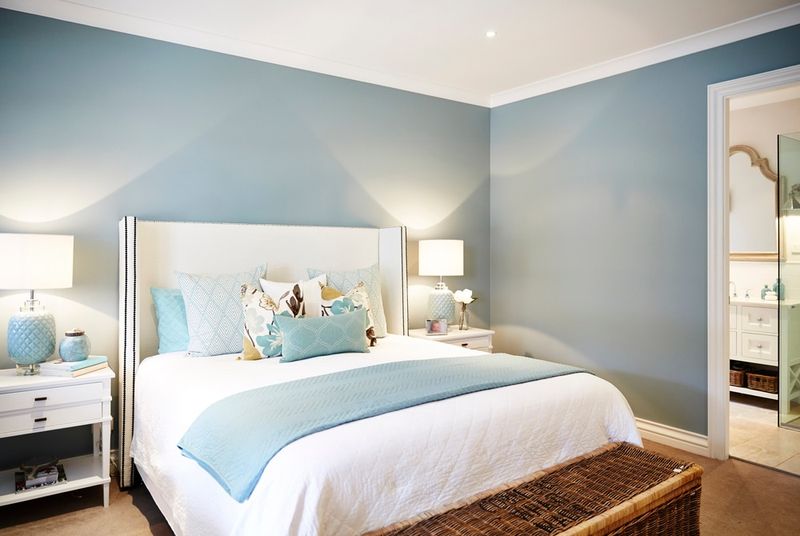
Your bedroom’s color palette significantly impacts both mood and sleep quality. Soft, cool tones like gentle blues, greens, and lavenders have been shown to lower blood pressure and heart rate, creating physiological conditions conducive to rest.
These colors work because they reflect less light and create fewer visual distractions for your brain to process. Avoid bright, energizing colors like vivid reds or oranges that stimulate rather than soothe. If repainting seems overwhelming, even changing one accent wall can transform the room’s feeling. Consider the natural light in your space when selecting shades colors appear different throughout the day.
Test samples on multiple walls before committing. For renters unable to paint, removable wallpaper or large fabric wall hangings in calming tones create similar benefits. The color surrounding you as you fall asleep and wake up subtly influences your mood and energy throughout the entire day.
19. Personal Décor Touches (everyone needs)
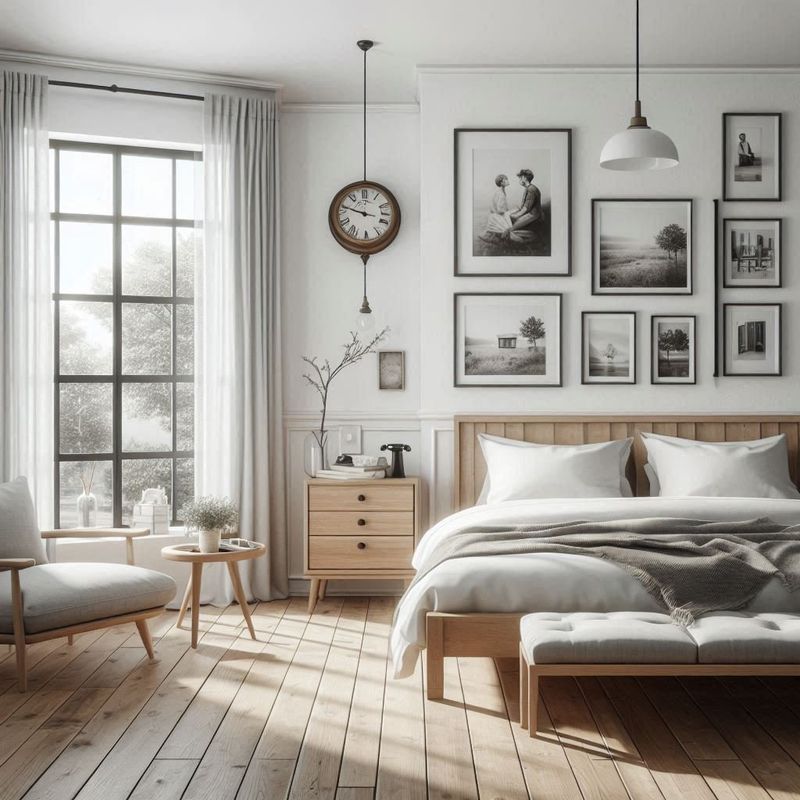
Meaningful items transform your bedroom from generic to genuinely restorative. Surrounding yourself with a few carefully chosen pieces that spark joy creates a space that truly feels like your personal sanctuary. Select quality over quantity a single cherished photo, a handmade ceramic, or artwork that resonates with you provides more psychological benefit than numerous meaningless decorations.
These meaningful objects activate positive emotional associations that help counteract daily stress. Rotate personal items seasonally to prevent visual fatigue and maintain their special significance. Keep surfaces mostly clear, allowing a few special pieces to stand out rather than competing for attention.
The most effective bedroom decor tells your personal story without creating visual clutter. When every item has meaning, your surroundings provide subtle emotional support that enhances your ability to relax and recharge.
20. A Good Book for Relaxing (everyone needs)
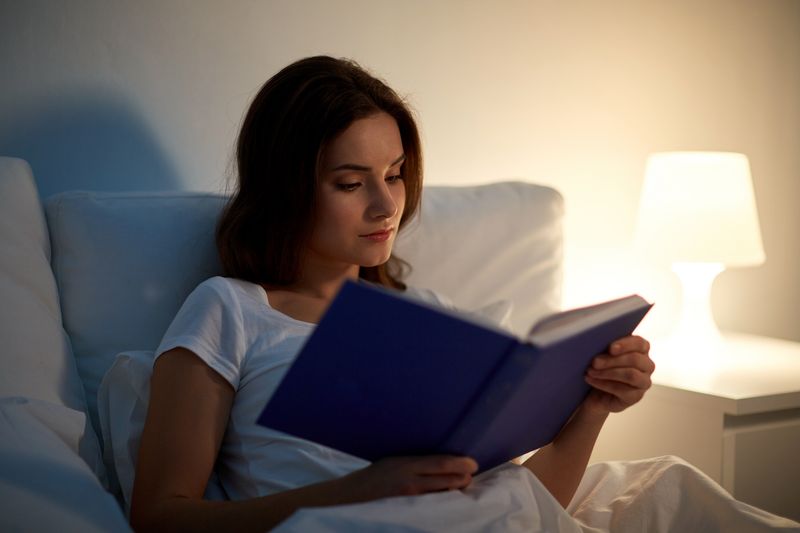
Reading physical books before sleep creates the perfect transition between daytime activity and restful slumber. Unlike screens that emit sleep-disrupting blue light, paper pages allow your brain to naturally wind down while still engaging your mind enough to break free from daily worries.
Fiction works particularly well, transporting you away from real-life concerns. Choose stories engaging enough to hold interest but not so thrilling they keep you awake. Poetry or essays in short sections work well for those who worry about getting caught in “just one more chapter” syndrome.
Keep your bedtime book separate from daytime reading, creating a specific association between this particular story and sleep. Many find that returning to beloved classics or gentle, familiar stories works best, as the slight predictability helps signal to your brain that excitement is ending and rest is coming.


